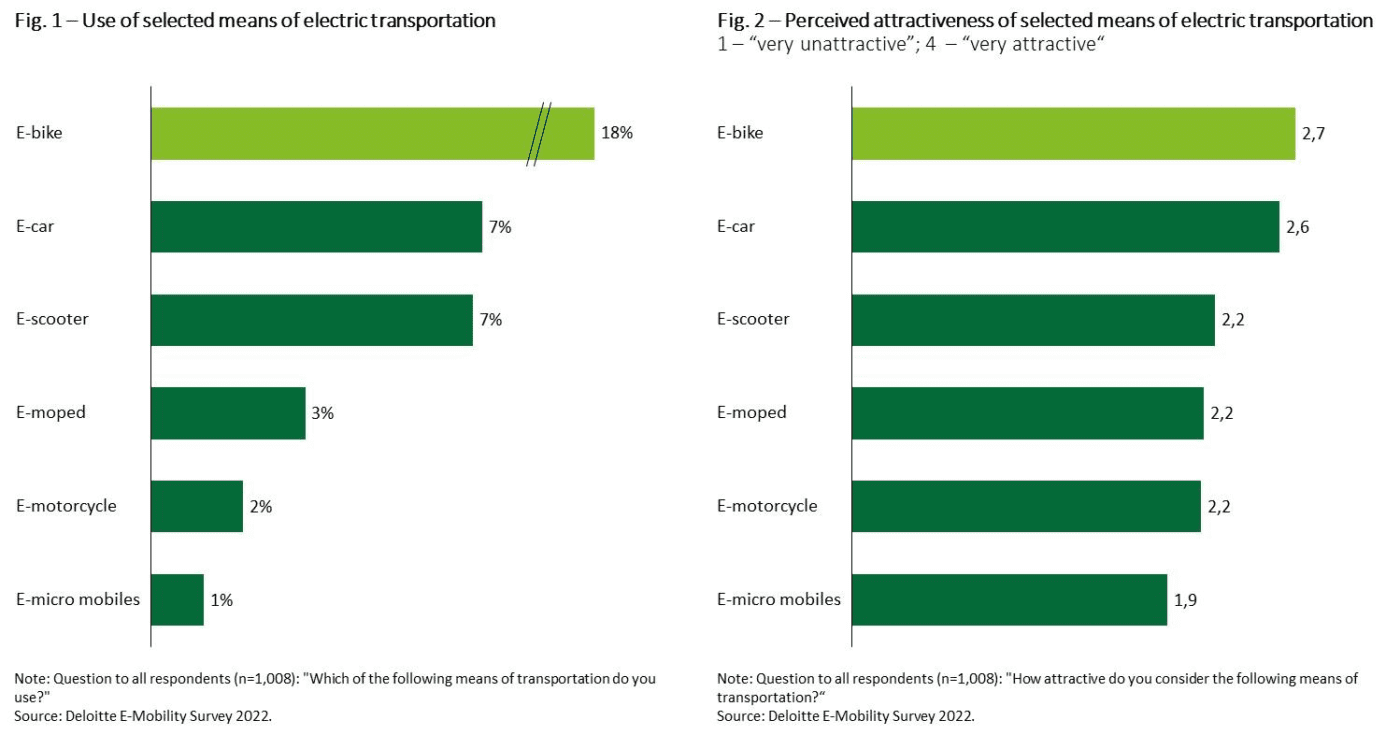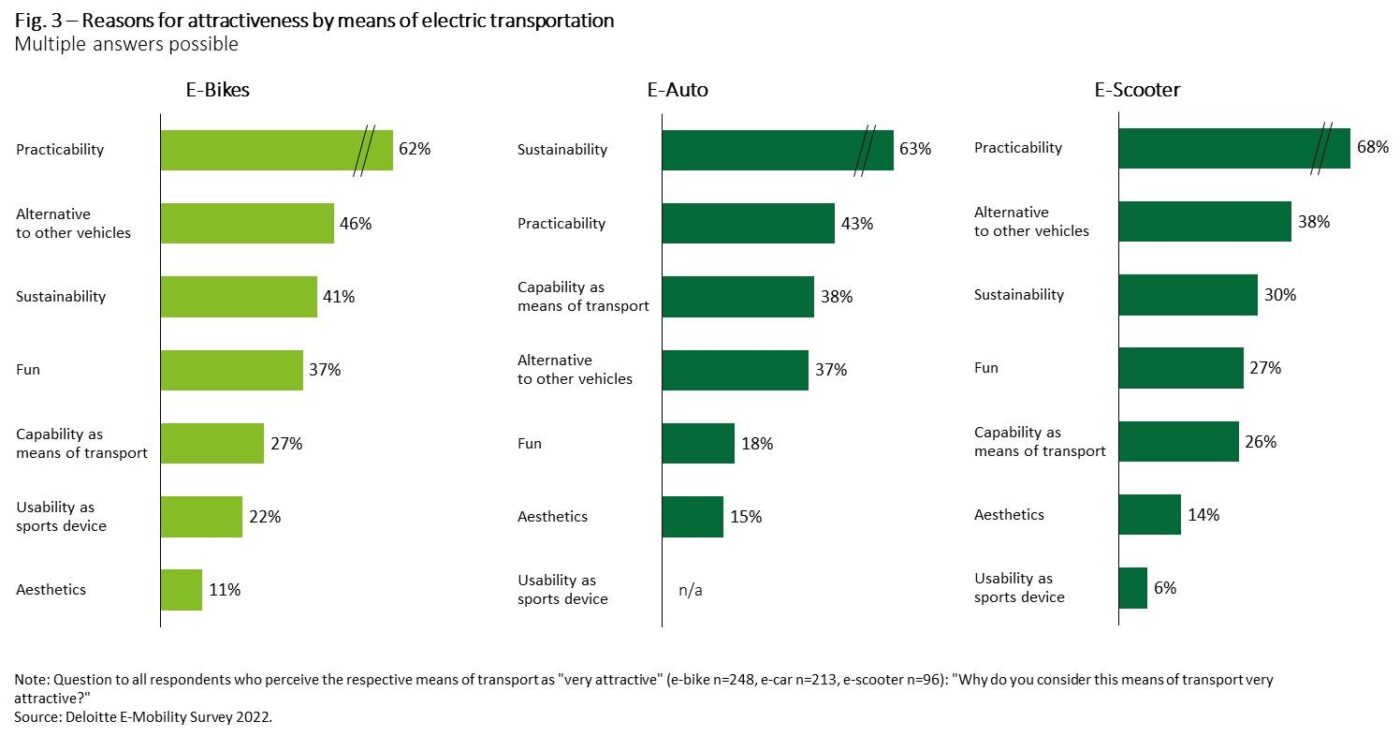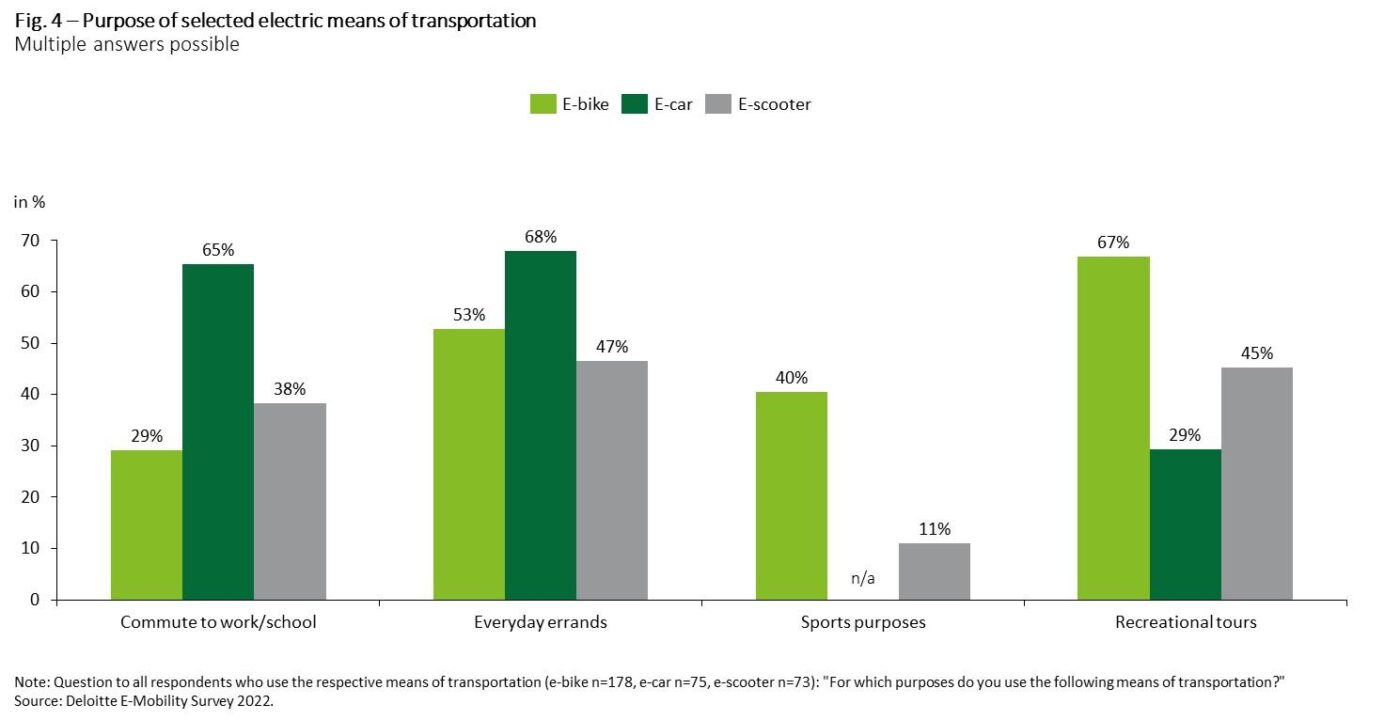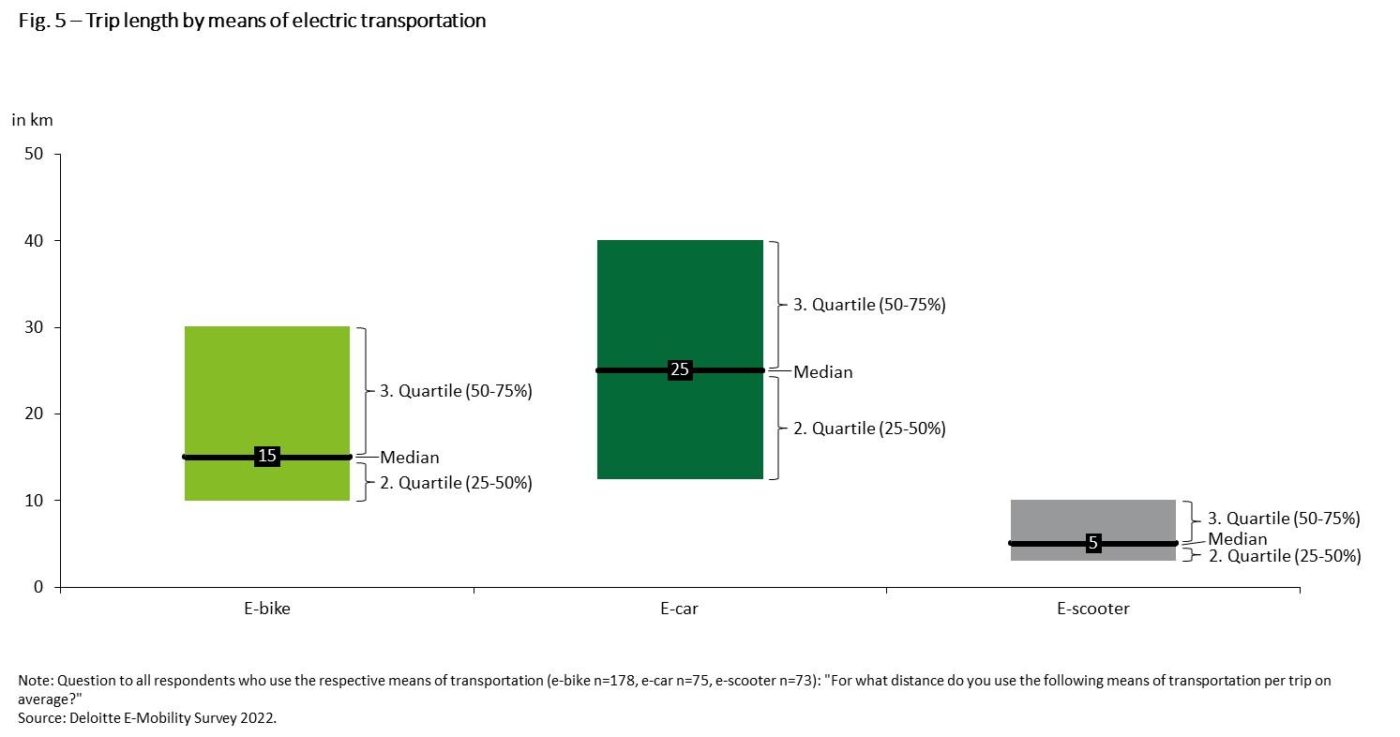E-Bikes Are Charged Up
E-bikes are key drivers of
electromobility and are on the rise –
in line with other electrified means of
transport (hereafter “e-mobility”).
E-mobility is viewed as a key pillar for a
more sustainable future. In recent
years, e-bikes have benefited from
the current developments of
increasing sustainability and health
awareness. These have been further
accelerated by the COVID-19
pandemic and the urge of many
people to exercise outdoors.
According to the German Bicycle
Industry Association (ZIV), the
number of e-bikes sold rose from 1.36
a million in 2019 to 1.95 million in the
first pandemic year of 2020. This high
level was sustained in 2021 (2.00
a million) despite difficulties in supply
chains and the resulting limited (e-
)bike supply. At this level, e-bikes
were responsible for nearly every
second bicycle purchase in Germany
(43%). This reconfirms its
continuously increasing share of the
German bicycle market.1
This Deloitte Sector Briefing looks at
the utilization rates, reasons, and
purposes of e-bikes, as well as at the
associated average distances covered
by e-bikes compared to other
e-mobility means such as e-cars and e-scooters.
The results are based on a
representative consumer survey
conducted by Deloitte in May 2022. A
total of 1,008 respondents from
Germany aged 18 and older
participated in the survey.
E-bikes most attractive electric means
of transport
18% of the participants stated that
they use an e-bike. Thus, e-bikes are
the most frequently used electric
means of transportation and are used
by significantly more respondents
than e-cars and e-scooters (7% each,
Fig. 1). One key reason for this is the
high level of perceived attractiveness.
Comparing the respondents’
assessment between the individual
means of e-transportation, e-bikes
(2.7) achieve the highest average
value (on a scale of 1 – “very
unattractive” to 4 – “very attractive”),
followed by e-cars (2.6) in second
place (Fig. 2).

Practicability and sustainability are
core reasons for attractiveness
Next to electrification itself, there are
further drivers for the high
attractiveness of e-bikes. Consumers
who rate them as “very attractive”
value the perceived practicality
above all other factors (62%, Fig. 3).
This includes the higher operating
range and the reduced physical
exertion compared to conventional
bicycles. A large proportion of
respondents perceive e-bikes as an
alternative to other means of
transport (46%) and as a more
sustainable form of transportation
(41%).

E-bikes differentiate themselves
through recreational and sports
purposes
According to the respondents, e-bikes
convey a higher fun factor (37%) and
greater usability as sports equipment
(22%). The fact that the electric motor
only supports the user’s physical
performance and does not entirely
replace it differentiates e-bikes from
other means of e-mobility (Fig. 4). In
contrast to other means of electric
transportation, e-bikes are commonly
used for sporting purposes (40%) as
well as for recreational tours and
excursions (67%).
However, for daily commuting,
e-bikes are perceived as somewhat less
attractive – only 29% of users
reported using an e-bike for
commuting to work or school.
Reasons for this include the perceived
lack of e-bike-compatible
infrastructure, increased physical
exertion compared to e-scooters, and
direct exposure to the weather
elements. A different picture emerges
for e-cars. The latter serves a large
proportion of users (65%) as a means
of transport to get to work. A key
advantage of the e-car is its
independence from weather
conditions. This factor is particularly
important for unavoidable daily
commutes. Nevertheless,
technological advancements, better
weather resistance, and better
transportation options (e.g., cargo
bikes) could increase the relevance of
e-bikes, and thus, contribute to
additional future growth.
For everyday errands, on the other
hand, an e-bike is used by
approximately every second user
(53%). Again, the study results show
that e-cars (68%) are used slightly
more often for everyday errands,
partly due to the ability to transport
larger items such as beverage crates.
However, the trend of electrified
cargo bikes and/or trailers enables
consumers to also use e-bikes for
larger purchases.

E-bikes also used for longer distances
In terms of median trip length, e-bikes
sit in the middle between e-scooters
and e-cars. However, e-bikes are
occasionally also used for longer
rides: The top quartile exceeds 30
kilometers per trip (i.e., 25% of the
values given are above this value). A
common usage of e-bikes for leisure
activities and long tours are among
the reasons for such distances.
Unsurprisingly, e-cars are used for the
longest distances (3
rd quartile until 40
km) with a median distance of 25
kilometers. Like their combustion
counterpart, e-cars are predestined
for long distances as an effortless and
weather-protected form of e-mobility.
In contrast, e-scooters, to be
operated standing up and susceptible
to weather conditions, are used for a
median of only 5 kilometers. This is
also due to the comparatively shorter
range.2

For now, e-bikes are riding ahead E-bikes are already the most
commonly used means of electric
transportation in Germany. Above all,
a positive perception of e-bikes
among a wide range of consumers
suggests further market penetration.
The combination of higher ranges
(compared to conventional bicycles),
more environmentally conscious
transportation (compared to cars
with internal combustion engines),
and sportive activity meets current
consumer demands and distinguishes
e-bikes from other electric
transportation. Accordingly, e-bikes
are used both for everyday
commuting and for recreational
purposes. Among others, additional
infrastructural adjustments will be
required to further increase the
attractiveness of e-bikes if this type of
electric transportation becomes more
widespread. The relatively high price
point of e-bikes poses a further
challenge. According to the German
Association of Two-Wheel Dealers
(Verb and des Deutsche
Zweiradhandels e.V.)3
, prices have
risen steadily in recent years.
However, the overall success of e-bikes can be expected to continue
both in terms of further penetration
of e-bikes in the bicycle market and in
terms of total sales. Additionally, the
potential of corporate bike leasing
and better e-bike availability after
recent supply problems could drive
e-bike sales figures in Germany even
further. Thus, e-bikes could extend
their lead in the short and medium-term
due to their current advantages
over e-cars and e-scooters.
